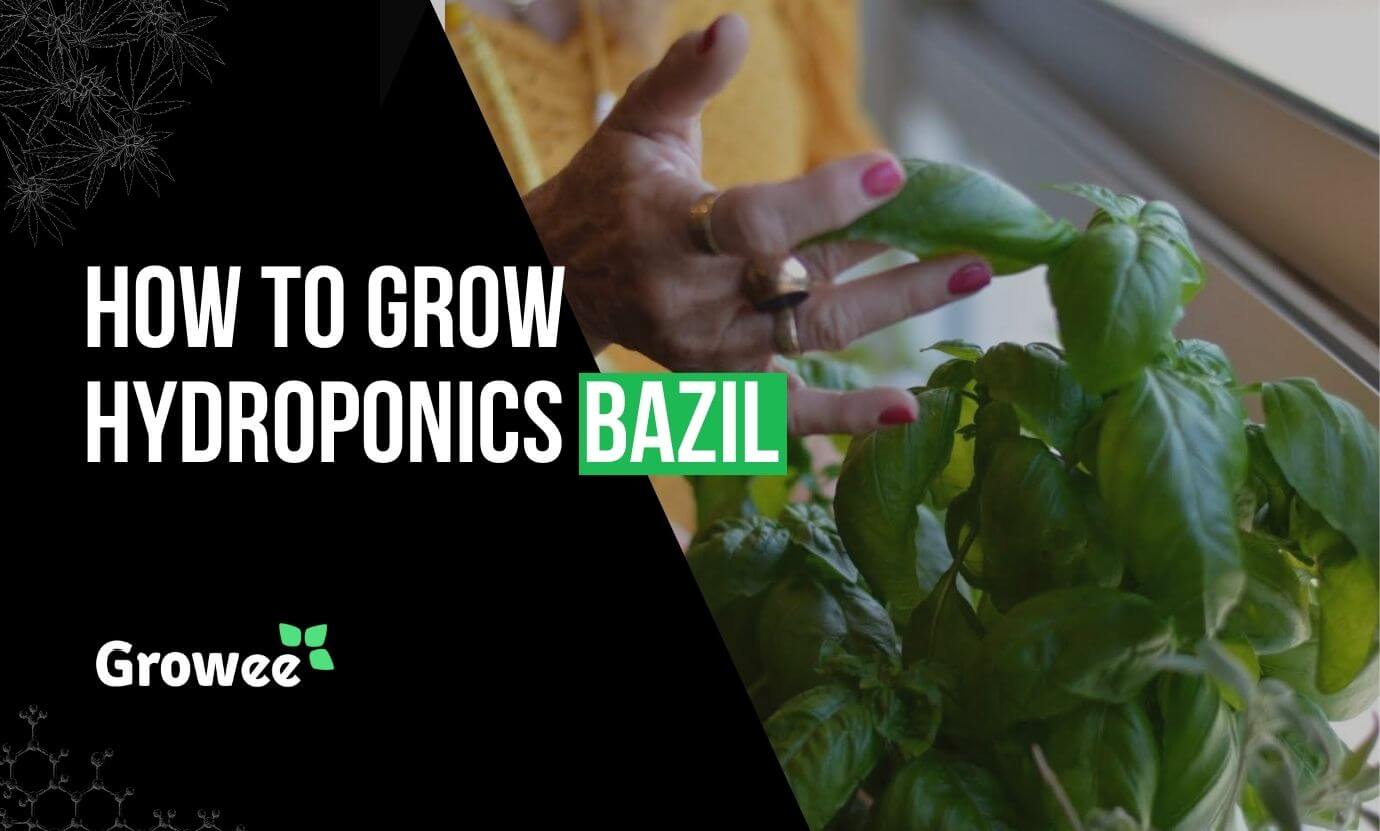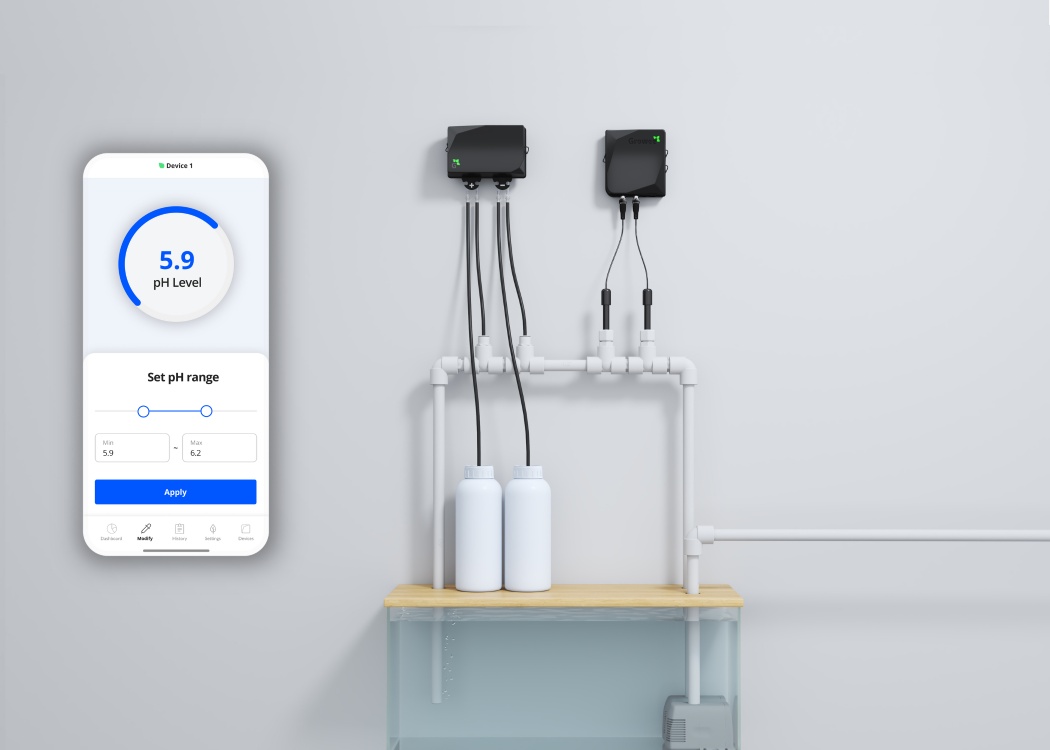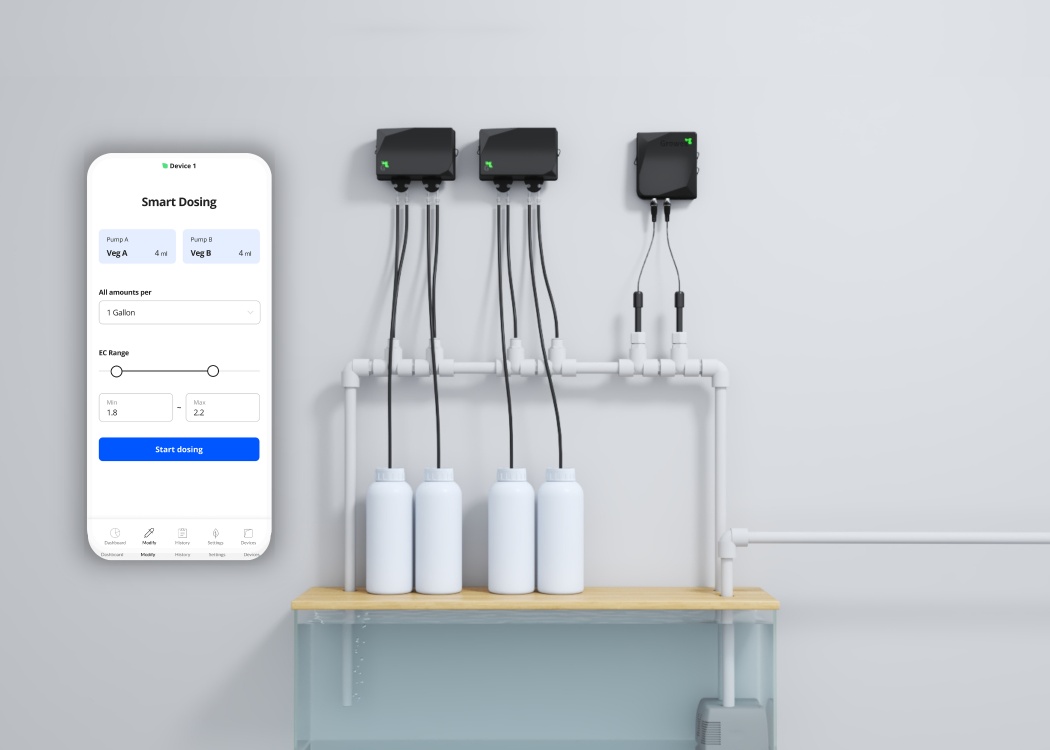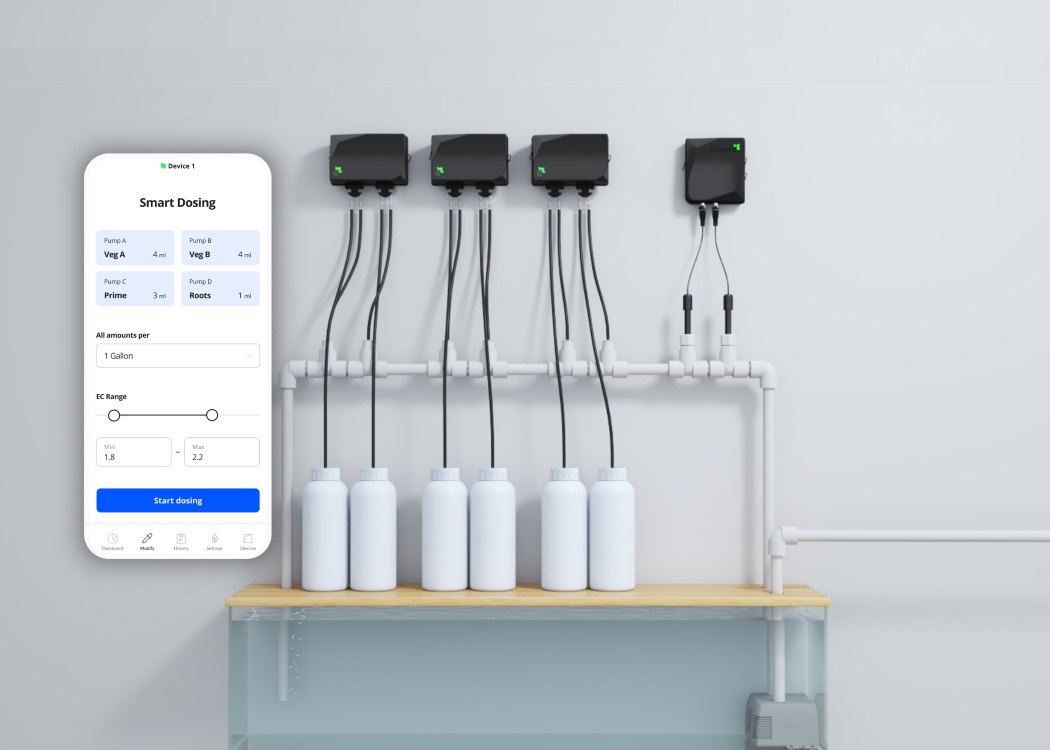Welcome to the exciting world of growing basil in hydroponics, where you can unleash the flavorful magic of this beloved herb. In this comprehensive guide, we’ll take you on a journey to explore the benefits of hydroponic basil cultivation. Get ready to dive into step-by-step instructions, valuable tips, and expert advice to help you grow flavorful basil in your own hydroponics garden. Whether you’re a beginner or an experienced grower, this guide has everything you need to unlock the full potential of your indoor, vertical farming system. Let’s embark on this hydroponic adventure and get ready to enjoy an abundance of fresh, aromatic basil!
Table of Contents
Why Choose Hydroponic Basil for Indoor and Vertical Farming?
Why limit yourself to traditional soil cultivation when you can experience accelerated growth and higher yields with hydroponic basil? Discover the convenience of growing basil indoors, regardless of seasonal limitations. Maximize your space efficiency and produce a bountiful harvest of fresh basil using vertical farming systems. Embrace the benefits of hydroponics, including water conservation and reduced risk of soil-borne diseases. It’s time to revolutionize your basil-growing game!
What are the Optimal Environmental Conditions for Hydroponic Basil?
- LED Lighting for Indoor Basil: Implement energy-efficient LED lighting systems to provide the necessary light spectrum for basil growth. Utilize white, deep red, and far-red lights to optimize photosynthesis and plant development.
- Electrical Conductivity (EC) in Hydroponics: Monitor and maintain your hydroponic nutrient solution’s ideal EC level of 1.2 us/cm. This ensures proper nutrient uptake and balanced growth for your basil plants.
- Temperature Control for Basil: Maintain a consistent temperature range of 26/20 °C (day/night) to create an optimal growth environment for your hydroponic basil. This temperature range promotes healthy plant metabolism and minimizes stress.
- Carbon Dioxide (CO2) Enrichment: Enhance photosynthesis and growth by maintaining a CO2 concentration of 800 ppm in your hydroponic system. CO2 enrichment stimulates plant productivity and enhances the flavor of basil leaves.
- Relative Humidity (RH) for Hydroponic Basil: Optimize relative humidity levels at around 55% to promote healthy leaf development and biomass production and minimize the risk of diseases in your basil plants.
Preventing Botrytis (Grey Mold) in Hydroponic Basil: 5 Essential Actions for Growers

Botrytis cinerea, commonly known as gray mold, is a fungal disease that can affect basil plants grown in hydroponic systems. This fungus thrives in high humidity conditions and can quickly spread, causing significant damage to the crop. To prevent botrytis and maintain healthy basil plants, growers should focus on the following key actions:
- Monitor Humidity: Keep a close eye on humidity levels in your hydroponic setup. Botrytis thrives in high humidity, so aim for a 50-60% relative humidity range. Proper ventilation and dehumidifiers can help regulate moisture and minimize the risk of fungal growth.
- Maintain Adequate Spacing: Provide enough space between basil plants for good airflow. As a general guideline, providing approximately 6-8 inches (15-20 cm) of space between basil plants is recommended. Proper spacing helps prevent humidity buildup around the foliage, reducing the chances of botrytis infection.
- Regularly Inspect Plants: Inspect your basil plants for any signs of botrytis infection. Look for grayish-brown spots, fuzzy growth, or wilting on leaves, stems, or buds. Promptly remove and discard any infected plant parts to prevent the spread of the disease.
- Practice Good Hygiene: Maintain a clean and sanitized growing environment. Regularly clean your hydroponic system, growing containers, and tools to eliminate potential sources of fungal spores. Good hygiene practices minimize the risk of botrytis contamination.
- Air Circulation: Promote good air circulation within the growing area using fans or proper ventilation systems. This helps reduce humidity levels, discourage fungal growth, and maintain a healthy growing environment.
Detecting botrytis in your basil plants is crucial for timely intervention. Look for signs such as discolored leaves, fuzzy growth on plant surfaces, and a musty odor. If you notice these symptoms, it’s essential to take immediate action by removing infected plant parts and adjusting the growing conditions.
Preventing botrytis in hydroponic basil requires consistent monitoring, proper humidity control, good hygiene practices, pest management, and timely intervention when symptoms arise. By implementing these preventive actions, growers can protect their basil crops and ensure healthy and productive yields.
Step-by-Step Guide to Growing Basil in Hydroponics
Select a suitable hydroponic system, such as NFT (Nutrient Film Technique) or DWC (Deep Water Culture). Install the necessary equipment, including pumps, air stones, timers, and grow lights.

Set up the NFT channels or gutters at a slight slope to allow a thin film of nutrient solution to flow over the roots.
Place the basil seedlings in net pots you can use Hydroton or grow cups and position them in the NFT channels, ensuring that the roots are suspended in the nutrient film.
Ensure a continuous flow of nutrient solution through the NFT channels, providing the roots with a constant supply of nutrients and oxygen.
Growing Basil in DWC System:
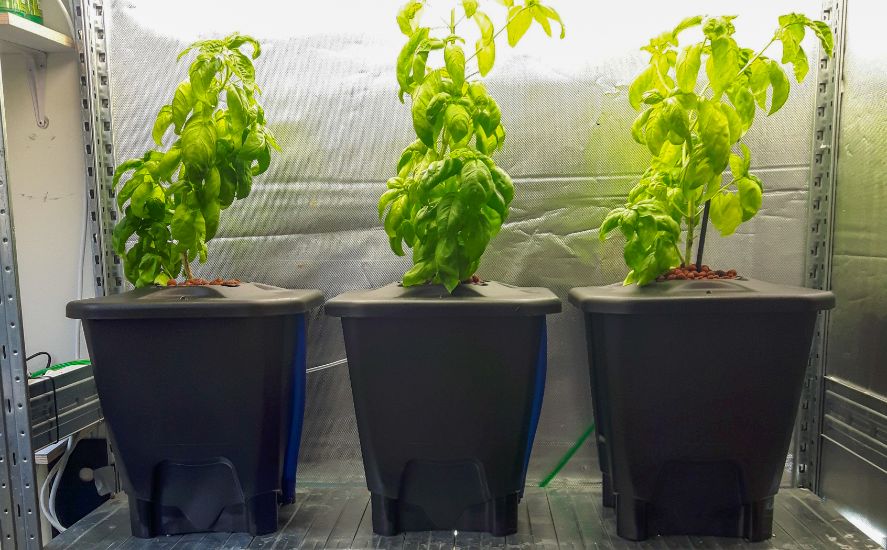
Fill the DWC reservoir with the hydroponic nutrient solution, making sure to leave enough space for the roots to submerge.
Place the basil seedlings in net pots or grow cups, ensuring that the roots are submerged in the nutrient solution.
Install an air stone or diffuser in the reservoir to provide oxygen to the roots and prevent stagnant water.
Maintaining Water Chemistry for Hydroponic Basil - Using Growee smart hydroponics controller
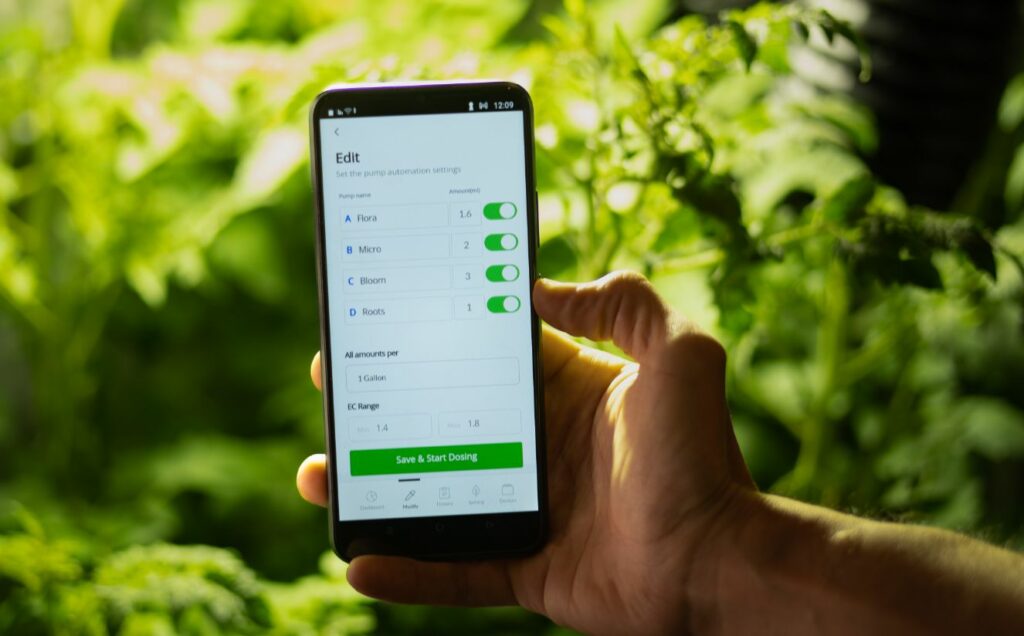
Maintaining your hydroponic basil system’s water chemistry is essential for successful and productive growth. By carefully managing the nutrient solution’s pH and electrical conductivity (EC) levels, you can ensure optimal nutrient uptake and plant health. Here’s what you need to know:
pH Level Control:
Growee’s automated pH control feature monitors the pH level of the nutrient solution in real time. It automatically adjusts the pH using precise dosing, ensuring it remains within the ideal range for basil growth. With Growee, growers can eliminate the need for manual pH adjustments, saving time and effort while maintaining optimal pH conditions.
Electrical Conductivity (EC) and nutrient dosing:
The Growee hydroponic control system also maintains the proper EC levels in the nutrient solution. It continuously measures the EC and adjusts the nutrient concentration as needed. By automating EC management, Growee ensures that basil plants receive the optimal nutrient balance for healthy growth and maximum yields.
Learn and improve using data:
Growee provides comprehensive data monitoring and analysis, allowing growers to track pH and EC trends. This valuable information helps make informed decisions and optimize nutrient solutions for better plant performance.
Maintaining proper water chemistry creates an optimal environment for hydroponic basil, promoting healthy growth, nutrient absorption, and, ultimately, higher yields of delicious basil. Regular monitoring and the use of automated control systems can streamline this process, making it easier for growers to achieve success.
Find the best fit for your hydroponics setup
Automatic pH balance and 6 pumps nutrients dosing, control from anywhere using your phone
Free shipping
1X Hydro Master
Main Hydroponics Contoler
1X pH balancer
Full pH Up & Down Control
3X Nutrient doser
Automatic Nutrient Dosing (2 Pumps Each)
Automatic pH Controller, pH up and Down Control from anywhere using the Growee App
Free shipping
1X Hydro Master
Main Contoler by app
1X pH balancer
Full pH Up & Down Control
Automatic 2 parts Nutrient Dosing | Include pH up & Down Control | Wi-Fi | Live pH, and TDS tracking
Free shipping
1X Hydro Master
Main Contoler by app
1X pH balancer
Full pH Up & Down Control
1X Nutrient doser
Automatic Nutrient Dosing (2 Pumps)
Best Seller
Automatic pH balance and 4 pumps nutrients dosing, control from anywhere using your phone
Free shipping
1X Hydro Master
Main Contoler by app
1X pH balancer
Full pH Up & Down Control
2X Nutrient doser
Automatic Nutrient Dosing (2 Pumps)
Automatic pH balance and 6 pumps nutrients dosing, control from anywhere using your phone
Free shipping
1X Hydro Master
Main Hydroponics Contoler
1X pH balancer
Full pH Up & Down Control
3X Nutrient doser
Automatic Nutrient Dosing (2 Pumps Each)
Automatic pH Controller, pH up and Down Control from anywhere using the Growee App
Free shipping
1X Hydro Master
Main Contoler by app
1X pH balancer
Full pH Up & Down Control
Automatic 2 parts Nutrient Dosing | Include pH up & Down Control | Wi-Fi | Live pH, and TDS tracking
Free shipping
1X Hydro Master
Main Contoler by app
1X pH balancer
Full pH Up & Down Control
1X Nutrient doser
Automatic Nutrient Dosing (2 Pumps)
Best Seller
Automatic pH balance and 4 pumps nutrients dosing, control from anywhere using your phone
Free shipping
1X Hydro Master
Main Contoler by app
1X pH balancer
Full pH Up & Down Control
2X Nutrient doser
Automatic Nutrient Dosing (2 Pumps)
Creative and Tasty Uses for Homegrown Basil
Your bountiful harvest of homegrown basil opens up a world of culinary possibilities. From classic pesto to tempting pasta dishes and flavorful sauces like chimichurri, your basil crop can elevate your culinary creations. Let’s explore delectable options for using freshly grown basil and awakening your taste buds.
Pesto Perfection:
Indulge in the vibrant flavors of homemade basil pesto. Blend fresh basil leaves with garlic, pine nuts, Parmesan cheese, and olive oil for a versatile sauce that complements pasta, spreads on sandwiches, or adds flavor to grilled vegetables.
Pasta Paradise:
Infuse your pasta dishes with the essence of basil. Toss al dente pasta with a medley of cherry tomatoes, mozzarella cheese, and freshly chopped basil for a delightful Caprese-inspired pasta salad. Or create a fragrant tomato-basil pasta sauce that will have your guests return for seconds.
Savory Sauces:
Take your grilling game to the next level with a zesty basil chimichurri sauce. Blend basil leaves, garlic, parsley, red wine vinegar, and olive oil to create a tangy and herbaceous sauce that pairs perfectly with grilled steak, chicken, or vegetables.
Flavorful Infusions:
Impress your guests with infused oils and vinegar. Fill a bottle with basil leaves and cover them with extra virgin olive oil to create a flavorful basil-infused oil. Use it to enhance the taste of salads or marinades, or drizzle it over fresh bruschetta. For a tangy twist, infuse white wine vinegar with basil leaves for a vibrant and aromatic addition to dressings and marinades.
Welcome to the exciting world of growing basil in hydroponics, where you can unleash the flavorful magic of this beloved herb. In this comprehensive guide, we’ll take you on a journey to explore the benefits of hydroponic basil cultivation. Get ready to dive into step-by-step instructions, valuable tips, and expert advice to help you grow flavorful basil in your own hydroponics garden. Whether you’re a beginner or an experienced grower, this guide has everything you need to unlock the full potential of your indoor, vertical farming system. Let’s embark on this hydroponic adventure and get ready to enjoy an abundance of fresh, aromatic basil!
Why Choose Hydroponic Basil for Indoor and Vertical Farming?
Why limit yourself to traditional soil cultivation when you can experience accelerated growth and higher yields with hydroponic basil? Discover the convenience of growing basil indoors, regardless of seasonal limitations. Maximize your space efficiency and produce a bountiful harvest of fresh basil using vertical farming systems. Embrace the benefits of hydroponics, including water conservation and reduced risk of soil-borne diseases. It’s time to revolutionize your basil-growing game!
See How Growee Can Save You Time By Automating Your Plants Feeding
Water pH – Automated pH Up and Down Control
Nutrients Mixing – Automated Nutrient Dosing with Target EC / PPM Control.
Control From Anywhere – WiFi Connection and mobile App
What are the Optimal Environmental Conditions for Hydroponic Basil?
- LED Lighting for Indoor Basil: Implement energy-efficient LED lighting systems to provide the necessary light spectrum for basil growth. Utilize white, deep red, and far-red lights to optimize photosynthesis and plant development.
- Electrical Conductivity (EC) in Hydroponics: Monitor and maintain your hydroponic nutrient solution’s ideal EC level of 1.2 us/cm. This ensures proper nutrient uptake and balanced growth for your basil plants.
- Temperature Control for Basil: Maintain a consistent temperature range of 26/20 °C (day/night) to create an optimal growth environment for your hydroponic basil. This temperature range promotes healthy plant metabolism and minimizes stress.
- Carbon Dioxide (CO2) Enrichment: Enhance photosynthesis and growth by maintaining a CO2 concentration of 800 ppm in your hydroponic system. CO2 enrichment stimulates plant productivity and enhances the flavor of basil leaves.
- Relative Humidity (RH) for Hydroponic Basil: Optimize relative humidity levels at around 55% to promote healthy leaf development and biomass production and minimize the risk of diseases in your basil plants.
Preventing Botrytis (Grey Mold) in Hydroponic Basil: 5 Essential Actions for Growers

Botrytis cinerea, commonly known as gray mold, is a fungal disease that can affect basil plants grown in hydroponic systems. This fungus thrives in high humidity conditions and can quickly spread, causing significant damage to the crop. To prevent botrytis and maintain healthy basil plants, growers should focus on the following key actions:
- Monitor Humidity: Keep a close eye on humidity levels in your hydroponic setup. Botrytis thrives in high humidity, so aim for a 50-60% relative humidity range. Proper ventilation and dehumidifiers can help regulate moisture and minimize the risk of fungal growth.
- Maintain Adequate Spacing: Provide enough space between basil plants for good airflow. As a general guideline, providing approximately 6-8 inches (15-20 cm) of space between basil plants is recommended. Proper spacing helps prevent humidity buildup around the foliage, reducing the chances of botrytis infection.
- Regularly Inspect Plants: Inspect your basil plants for any signs of botrytis infection. Look for grayish-brown spots, fuzzy growth, or wilting on leaves, stems, or buds. Promptly remove and discard any infected plant parts to prevent the spread of the disease.
- Practice Good Hygiene: Maintain a clean and sanitized growing environment. Regularly clean your hydroponic system, growing containers, and tools to eliminate potential sources of fungal spores. Good hygiene practices minimize the risk of botrytis contamination.
- Air Circulation: Promote good air circulation within the growing area using fans or proper ventilation systems. This helps reduce humidity levels, discourage fungal growth, and maintain a healthy growing environment.
Detecting botrytis in your basil plants is crucial for timely intervention. Look for signs such as discolored leaves, fuzzy growth on plant surfaces, and a musty odor. If you notice these symptoms, it’s essential to take immediate action by removing infected plant parts and adjusting the growing conditions.
Preventing botrytis in hydroponic basil requires consistent monitoring, proper humidity control, good hygiene practices, pest management, and timely intervention when symptoms arise. By implementing these preventive actions, growers can protect their basil crops and ensure healthy and productive yields.
Step-by-Step Guide to Growing Basil in Hydroponics
Select a suitable hydroponic system, such as NFT (Nutrient Film Technique) or DWC (Deep Water Culture). Install the necessary equipment, including pumps, air stones, timers, and grow lights.

Set up the NFT channels or gutters at a slight slope to allow a thin film of nutrient solution to flow over the roots.
Place the basil seedlings in net pots you can use Hydroton or grow cups and position them in the NFT channels, ensuring that the roots are suspended in the nutrient film.
Ensure a continuous flow of nutrient solution through the NFT channels, providing the roots with a constant supply of nutrients and oxygen.
Growing Basil in DWC System:

Fill the DWC reservoir with the hydroponic nutrient solution, making sure to leave enough space for the roots to submerge.
Place the basil seedlings in net pots or grow cups, ensuring that the roots are submerged in the nutrient solution.
Install an air stone or diffuser in the reservoir to provide oxygen to the roots and prevent stagnant water.
Maintaining Water Chemistry for Hydroponic Basil – Using Growee smart hydroponics controller

Maintaining your hydroponic basil system’s water chemistry is essential for successful and productive growth. By carefully managing the nutrient solution’s pH and electrical conductivity (EC) levels, you can ensure optimal nutrient uptake and plant health. Here’s what you need to know:
pH Level Control:
Growee’s automated pH control feature monitors the pH level of the nutrient solution in real time. It automatically adjusts the pH using precise dosing, ensuring it remains within the ideal range for basil growth. With Growee, growers can eliminate the need for manual pH adjustments, saving time and effort while maintaining optimal pH conditions.
Electrical Conductivity (EC) and nutrient dosing:
The Growee hydroponic control system also maintains the proper EC levels in the nutrient solution. It continuously measures the EC and adjusts the nutrient concentration as needed. By automating EC management, Growee ensures that basil plants receive the optimal nutrient balance for healthy growth and maximum yields.
Learn and improve using data:
Growee provides comprehensive data monitoring and analysis, allowing growers to track pH and EC trends. This valuable information helps make informed decisions and optimize nutrient solutions for better plant performance.
Maintaining proper water chemistry creates an optimal environment for hydroponic basil, promoting healthy growth, nutrient absorption, and, ultimately, higher yields of delicious basil. Regular monitoring and the use of automated control systems can streamline this process, making it easier for growers to achieve success.
Creative and Tasty Uses for Homegrown Basil
Your bountiful harvest of homegrown basil opens up a world of culinary possibilities. From classic pesto to tempting pasta dishes and flavorful sauces like chimichurri, your basil crop can elevate your culinary creations. Let’s explore delectable options for using freshly grown basil and awakening your taste buds.
Pesto Perfection:
Indulge in the vibrant flavors of homemade basil pesto. Blend fresh basil leaves with garlic, pine nuts, Parmesan cheese, and olive oil for a versatile sauce that complements pasta, spreads on sandwiches, or adds flavor to grilled vegetables.
Pasta Paradise:
Infuse your pasta dishes with the essence of basil. Toss al dente pasta with a medley of cherry tomatoes, mozzarella cheese, and freshly chopped basil for a delightful Caprese-inspired pasta salad. Or create a fragrant tomato-basil pasta sauce that will have your guests return for seconds.
Savory Sauces:
Take your grilling game to the next level with a zesty basil chimichurri sauce. Blend basil leaves, garlic, parsley, red wine vinegar, and olive oil to create a tangy and herbaceous sauce that pairs perfectly with grilled steak, chicken, or vegetables.
Flavorful Infusions:
Impress your guests with infused oils and vinegar. Fill a bottle with basil leaves and cover them with extra virgin olive oil to create a flavorful basil-infused oil. Use it to enhance the taste of salads or marinades, or drizzle it over fresh bruschetta. For a tangy twist, infuse white wine vinegar with basil leaves for a vibrant and aromatic addition to dressings and marinades.

